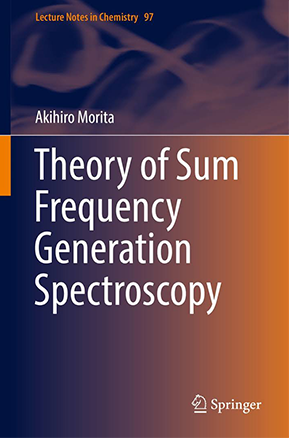Liquid interfaces, such as gas-liquid or solid-liquid ones, play versatile roles in heterogeneous phenomena in chemistry. However, microscopic observation of liquid interfaces is generally quite challenging, because one has to selectively detect molecular species located at interfaces by distinguishing them from the ones in the adjacent bulk phases. Sum Frequency Generation (SFG) spectroscopy is known as a powerful tool to probe liquid interfaces with excellent sensitivity and selectivity to the interfaces. Our group have proposed and developed the theory of SFG spectroscopy, and enabled close collaboration between experimental SFG measurement and molecular dynamics (MD) simulation. Collaboration of the two techniques is indeed quite powerful to reveal detailed microscopic structure of liquid interfaces. Our group recently published a textbook on the theory of SFG spectroscopy. This book summarizes our theoretical efforts toward comprehensive understanding of this interface-specific spectroscopy and interfaces.
Akihiro Morita, “Theory of Sum Frequency Generation Spectroscopy,” Lecture Notes in Chemistry 97, Springer (2018).
https://doi.org/10.1007/978-981-13-1607-4

(Reproduced from “T. Miyamae, A. Morita and Y. Ouchi, Phys. Chem. Chem. Phys., 10, 2010-3 (2008)” with permission of the Royal Society of Chemistry.)
